I hope to help the younger or more inexperienced system builders out there, and anyone confused or stuck at some point. I encourage you younger and inexperienced builders to read through the whole thing, and others to skim over at their pace. Also, since this is based on my experience over a decade of building AMD rigs and the Ryzen rig I built recently over the past couple of months, a lot of examples use AMD systems. Regardless, most if not all that advice and experience can be applied to Intel systems, and I’ve done my best to do so. Happy reading!***
.jpg)
Greetings!
I’m writing here today to share with those of you eyeing that shiny new build some advice on that topic. This will be from experience I have gained over the years and indeed, gained over the past few months that were spent obsessing over the Ryzen build I’ve just finished piecing together.
A little background on myself is in order: I’ve been a pc enthusiast for slightly over a decade now. You most certainly do not need any qualification of that nature to be doing this. PC building ultimately relies on its community of enthusiasts and DIYers to continue enriching the shared knowledge pool for all of us out there. Indeed, I started building back in the 9th grade and am happy to say I haven’t blown anything yet and the local power station still exists. So, without much ado, here’s the system I’ve just built:
Processor: AMD Ryzen 7 1700 OC’ed to 3.7GHz @ 1.275v
Motherboard: Gigabyte GA-AB350 Gaming 3
Graphics Card: Gigabyte AORUS GTX 1080 Ti 11GB
RAM: 16GB (8x2) Corsair Vengeance LPX 3000 @ 2933MHz CL16 (XMP)
PSU: Corsair RM750x
Samsung 850 EVO 250 GB (Primary OS & Applications)
Crucial MX300 275GB (Game Drive)
Western Digital 1TB mass storage hard drive
LG 34UM60 2560x1080 75Hz Freesync display (Soon to be replaced by an Acer Z35 G-Sync display)
All this in a NZXT S340 Elite case
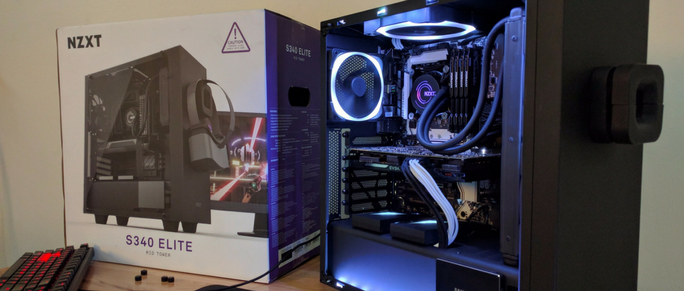
Yes, that’s a good high-end build beyond which point the effect of diminishing performance returns looms really large currently. Many of you reading this will be quick to point out the smaller game drive SSD (and you’d be right there) and will definitely point out that a 2560x1080 panel is not enough for this build and why pixel density for that resolution at 34” is poor. Allow me an opportunity to counter that in the section dedicated to monitors in this post. Maybe also the B350 chipset instead of an X370. Let’s break it all down, component by component:
Considerations in choosing a processor:
Risking backlash, I’m going to say this flat out: buy the fastest factory-clocked chip you can buy without telling yourself you’ll overclock it to match the faster chips. This is in stark contrast to the overclocked Ryzen 1700 I’ve put into my own build. Here’s why:
- You’re going to tell yourself you’re saving money on the chip and being very smart, but will spend that money on a X370 board “for the beefier VRMs and overclocking features” and will then convince yourself you need a 280mm radiator because who buys a 140mm one, right?
- Companies like AMD and their motherboard manufactures like to make overclocking sound very easy, they make many videos of it and when you see experts from these companies reiterate how easy and quick it is, you tend to believe it. It’s not that simple and requires more work.
.jpg)
The companies will make it look easy because the chipset designer like AMD wants to sell you the X370 chipset for a multitude of reasons: one, they may have higher margins on those than on processors themselves and two, because once they’ve got you to invest in a top of the line board, they’ve effectively sold you onto their platform and made you reluctant to move away. Along with making you very unlikely to shift away from their ecosystem, they also might have sold you few more future processors supported by the socket and motherboard! Motherboard manufacturers like it because, come on, it’s obvious: the boards cost more.
While we’ll talk about the motherboards next, focusing on the processors for now, overclocking them can be expensive. Let’s consider the cost: a Ryzen 1800x is $500 (can be found at $429 easily now days) and a Ryzen 1700 is $330 (can be found around $270 I believe). That’s less than a $200 price difference. An X370 board will often cost a $100 over the B350 board I picked up, and the water coolers range from $110-$160. You’ve most probably spent more already, if not as much. Yes, you can overclock with a B350 + an air cooler, but most of you will not do that. You’ll see the videos, read the reviews and say “Oh I want to stick with Ryzen for long, I’ll just get the ‘better’ board with the overclocking features.” Factor in a better air cooler for even $50, and the cost difference between a R1700 and a R1800x vanish. The difference is even smaller with the R1600 and R1600x. Yes, you’ll also need to buy a cooler with the “x” marked chips, even then, you’re not saving a significant amount, if you’re saving any at all, that is.
As for overclocking itself, keep in mind you need to fidget a lot with voltages and every time you think you’ve found a stable voltage, you need to stress test it for many, many hours before being sure. Some enthusiasts will say 24hrs, some will say 48, some will say “hey if doesn’t crash on a Prime95 SmallFFT or Blend test in an hour, you’re gold because gaming won’t stress it as much anyway” and they’re right with that. What do I say? Given that a machine can fail a stress test at even the 30th hour and be deemed “unstable”, do it for as long as you’re patient. If you’re okay with keeping the rig on all night only to wake up and see it crashed and its experiment time again, go ahead. I don’t have that patience, I need something that just works, good and fast. Most of you do too.
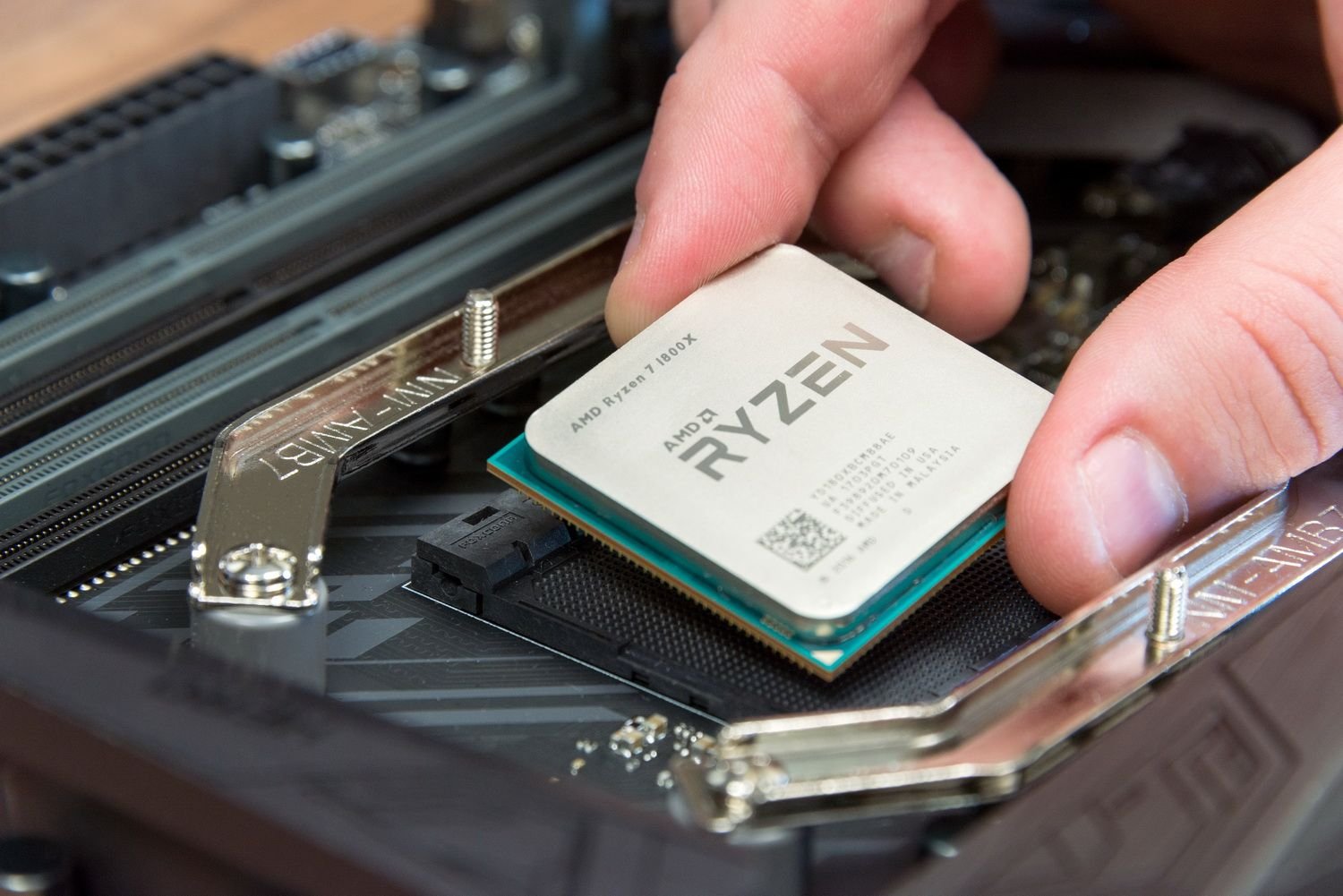
Another point to this story: voltage requirements change over an extended period of time as the CPU mildly degrades from an overclock that’s not been thoroughly tested. Case in point: I had my R1700 pass a couple hours of the Prime95 SmallFFT CPU torture test when clocked to 3.65GHz @1.18v. Fast forward a couple months when I started noticing mildly weird behavior from my system, and it bluescreened in 2 minutes of that test. Now it’s at 3.7GHz @ 1.275v, having passed several hours of SmallFFT again. Will it degrade again? Who knows. How can I ensure against it? Thorough stability testing. What comprises that? Who knows, you’ll get many different accounts. Get the fastest factory-clocked chip. Look at overclocking as something you’d do to extend the life of the CPU for a couple extra months or maybe a year before replacing it. The 1800x and 1600x overclock to 4.0GHz on 2 cores and 4.1GHz on one, that’s already great for most games out there that are single thread heavy (like GTA V and Far Cry 4). The couple extra frames you might get from future games is simply not worth it, especially if you manage a Freesync or G-sync display on your rig.
This advice applies just as well to Intel chips. Get the fastest factory clocked chip, but with Intel, also do try to get the ‘K’ or ‘X’ marked chips for the unlocked multiplier. Why? Because Intel upgrades are always costlier since you most likely need to change your motherboard as well. So a chip capable of some overclocking might really extend the life of your rig, just ask the i5 2500k owners!
Considerations in choosing a motherboard:
Now this is my favorite topic, and the component I spent the most time researching. Why? Because of how everyone seems to love justifying getting the most expensive board out there. There’s always a good reason: “beefier VRMs, dude!”, “more I/O, dude!”, “SLI, dude!”.
First up, I am not suggesting you get a 1800x and shove it onto a $60 A320/B350 board. Nah, that’s another extreme. Likely because those boards were not really manufactured with the thought that they’d be graced with a top-of-the-line chip, and may actually have weaker VRMs. But look at some of the top B350 boards which are known to officially support an 1800x very well. You’ll have no problems running it, maybe even overclocking it a bit. But really, consider the future proofing excuse, AMD recently stated these first-generation Ryzen chips were “the worst-case scenario” considering the new architecture on a new process node. Future chips will only have higher clocks at lower voltages, meaning an adequate VRM such as those on the top B350 boards would do just fine. Also, most VRMs on X370 boards are already known to be overkill for current Ryzen chips. Personally, I rank the beefier VRM reasoning as the weakest one for an expensive motherboard.
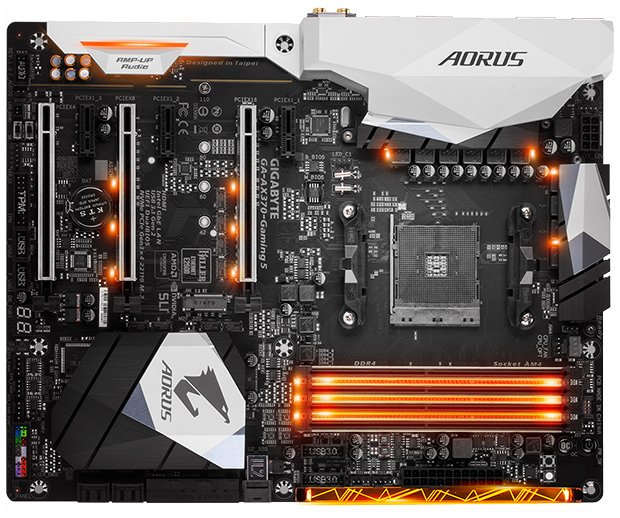
Continuing our look at some great B350 boards, they have the same awesome ALC1220 audio codec as their X370 counterparts, solid build quality, BIOS recovery facilities like Dual BIOS and some other goodies like the diagnostic LEDs on the Gigabyte boards, and they cost a $100 less than their equivalent X370 boards. Talking of I/O, since many fear the lack of adequate SATA and USB ports, speaking from my experience my Gaming 3 board comes with 7 USB ports, 4 of them are taken up by the keyboard, mouse, speaker and the USB WiFi dongle. That still leaves me with 3 USB3 ports. On top of this, I get two extra USB 3.0 port along with a couple USB2.0 ports for the front from the motherboard, and simply use them for any external device I connect. Point being, I still have adequate empty slots. The board I have comes with 6 SATA ports. Ryzen itself provides for 2 of these, and I believe you lose them should you attach an M.2 SATA drive. Considering the miniscule real-world difference of using even a NVMe drive which we’ll also speak of soon, I’d say 6 ports is really overkill for 99% of the PC users out there. Granted my use case and yours would differ, but I doubt by very much even with high-end builds.
Let’s talk of multiple GPUs. Firstly, you should really only be considering this if you’re planning on 4k, and more so if you’re futureproofing for any upcoming 4k 144Hz monitor you’re hoping to splurge on as and when they come out. For all other purposes, you’re advised to stick to a single powerful GPU by getting the best one you can afford. Why? Consider that SLI has very poor developer support, and when it does, you’re very, very unlikely to see 100% scaling and get 60FPS where you were getting 30FPS. Also considering Nvidia has over 70% of the GPU market share, I don’t need to elaborate on the brilliant developer support Crossfire enjoys. You would be much happier and face much less headaches and have much more fun and even save considerable dough with a single 1080 Ti rather than a pair of 1080s in SLI. But supposing you do want the 1080 Ti or even a Titan SLI setup because of the aforementioned 144Hz 4k or because you’re certified Enthusiast Number 1 with a wallet deeper than the Marina Trench, you may then want to consider a HEDT platform, as Ryzen and most chips around that price will support only a single PCI-E 3 lane running at x16. For example, SLI may be supported by Ryzen on X370 boards, but the two slots will run on x8/x8 mode. Intel will be similar, do check. While this would not have been an issue a couple years ago, with the advent of monsters such as the 1080 Ti and Titan cards and the equally monstrous high resolution, high refresh rate displays, there are noted instances of such a x8/x8 setup for SLI actually bottlenecking such cards. So, get a Threadripper and enjoy the 64 PCI-E lanes regardless of chip, or get a X299 based processor that supports the desired number of lanes, but don’t pick up X370 or similar Intel counterparts for SLI. As for Crossfire, if you’re intent on it, several B350 boards do support it, though again in a x8/x8 setup, though that may prove adequate for AMD cards. Point being: get either a single 1080 Ti, or if SLI’ing those or Titans, look at an HEDT rig and do it properly (and get a 1200W PSU to be absolutely safe).
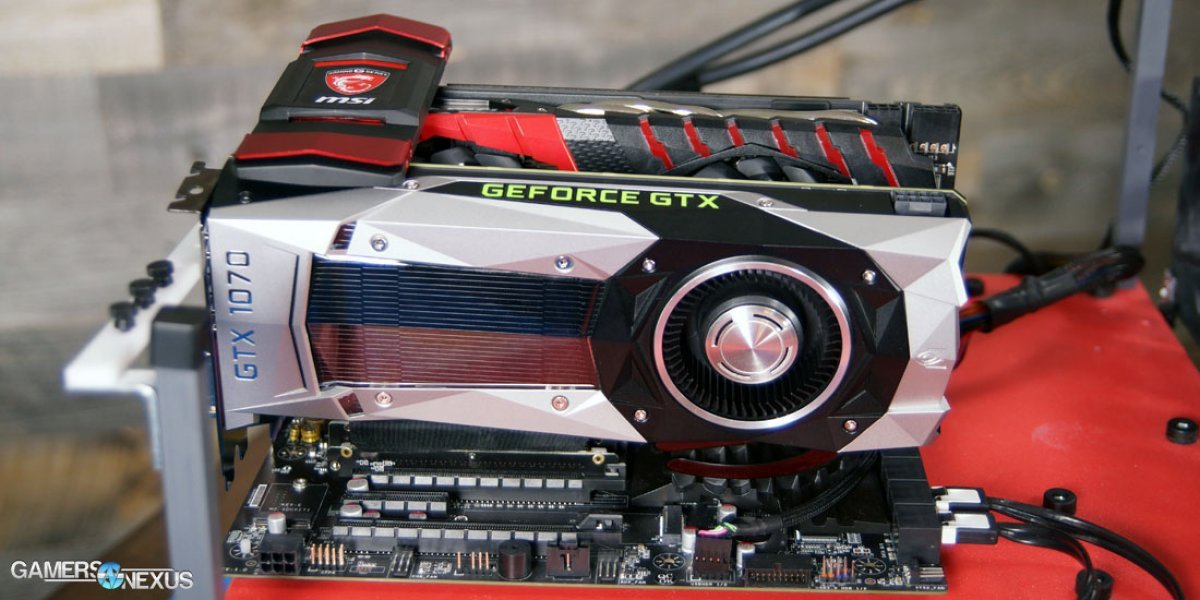
You’ll likely have a similar situation with Intel boards. I’d just like to conclude this section by saying it’s hardly ever necessary to spend nearly $200 on a motherboard, when so many in the $90-$130 range are built so well and packed with adequately more than the essential features. Visit the manufacturers websites and take advantage of their comparison tools; do your own homework before you spend the extra amount just because you think you should, or because it’s the most popular thing to do.
Considerations for CPU cooling:
Another topic that gets a lot of attention, only some of which is justified according to me, is CPU cooling. Yes, it is important to keep the chip cool, but not as cool as possible. Why? Simply because there’s no need to spend the money there. Consider this, my R7 1700 at 3.7GHz reached 85 degrees during a Prime95 SmallFFT torture test while using its default 95W Spire cooler. That is indeed high, yet 10 degrees lower than the 95 degrees limit AMD prescribes for it, but here’s the kicker: it gets that hot in a scenario very unrepresentative of my regular use case. While gaming, it doesn’t exceed 65 degrees, a full 30 degrees below its 95 degree limit, even with the AORUS 1080Ti in my system radiating it’s heat upwards and towards it over prolonged gaming sessions. Yes, a better air cooler would knock it down by maybe 10-12 degrees, a water cooler by 15-25. But, why? The chip is far below it’s 95 degrees limit, and I cannot hear the fan. A loud fan is indeed a good reason to get a better cooler, if the noise from your fan bothers you, by all means go ahead and get one. If, however, the sound from the fan is not bothering you yet, save that money. The sound from the Wraith cooler on my older Phenom II X6 1090T really bothered me, and I simply solved it by swapping out that fan for a better one; a much cheaper, faster and easier solution rather than changing the whole thing!
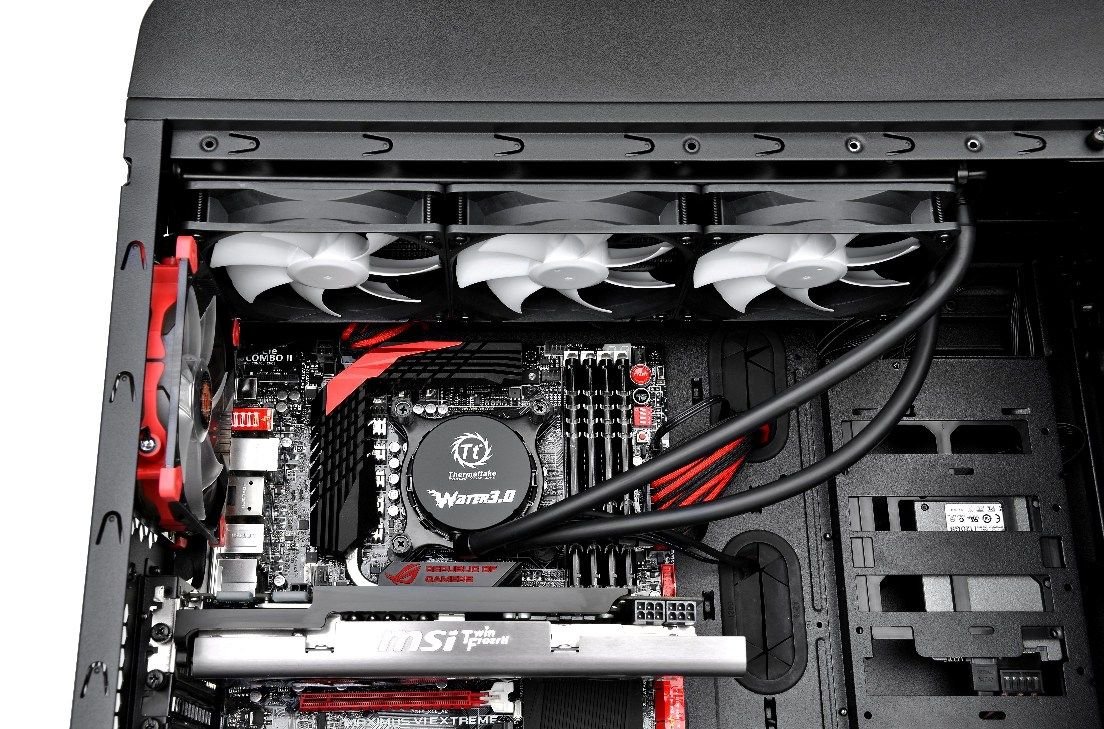
If you really like the idea of an AIO liquid cooler, then go ahead, but I urge you to consider a 140mm radiator to save some dough. Yes, 280mm is better, but a 140mm radiator is already as good or slightly better than most good air coolers, and that’s really perfect enough. But more importantly, do consider that you’re adding another part to your rig that is candidate for an RMA: the pumps do fail, sometimes sooner than later, and worse: liquid leaks. Maybe it’s not as common, but it still happens: just recently I came across a post here on Reddit by a person whose Corsair H100i literally burst a pipe during operation and fried his motherboard and GTX 970. Also, when you are thinking of that sexy Kraken or H100i, consider that neither NZXT nor corsair are known for their world class customer service. Just be sure of your decision and think of it from many angles, is all I’d like to reiterate. Personally, I wouldn’t be able to sleep at night thinking of any CPU water cooling equipment, the Kraken or the H100i or whatever lingering right over my 1080 Ti, but that’s just me. You may differ.
One last thing: you may think you’re keeping your room cool in the summer by gaming with the CPU at just 35 degrees Celsius thanks to your 360mm radiator, but keep in mind that heat has got to go somewhere, and a better CPU or any component cooler is only considered better for its ability to dump more heat from the component that it is cooling into its surrounding environment. You may be running your chip cooler at the cost of a warmer zone around your PC, all for no added benefit to your CPU that’s already well below its thermal limit!
Considerations in choosing a power supply:
This is the one component I advise you to splurge on. Get a great PSU, after all, it’s going to be delivering power to your components, do you really want to skimp on that?! As for wattage, you must decide based on your use case. If this is a rig you may even have a remote probability of upgrading in the future, get at least a good 650W PSU. That should be enough for a high-end processor and a 1080 Ti along with a good number of HDDs and SSDs. Were possible, getting a 700W or 750W PSU would not hurt so as to keep a little extra breathing room, though it may not be immediately essential. If you feel you may SLI or Crossfire in the future and have a rig with some watercooling and several drives, please do look at a 1200W PSU. If you’re beyond certain of a zero possibility of upgrading and are building a moderate system, even a 550W PSU should suffice: but never skimp on quality. If there is any chance that you may upgrade, think how much it would suck to have to buy a new PSU again at that time. Invest in this one, it’s a long-term call.
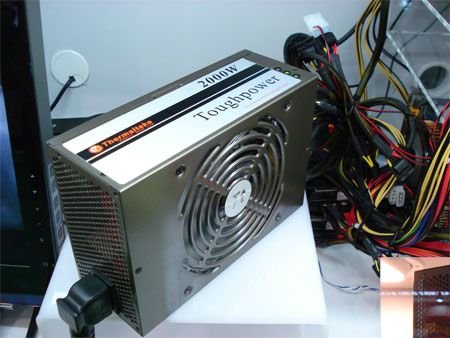
There are also PSUs with digital interfaces that let you monitor things via software, I do not think that’s very useful, but if you like the idea, get one. One thing: the PSUs by Corsair that have the digital interface have one feature over the standard ones I like: a PSU fan test switch. With many PSUs having a silent operation mode and keeping their fans off when the power draw is below a certain amount (350W on my 750W RMx, I believe), the fan stays off and sometimes one gets concerned that the fan is at least operational. A fan test switch is indeed useful here. Corsair has the RMi and HXi series, with the ‘i’ demarcating the digital interface. Other PSU brands will have something similar. Check on it.
Considerations for storage:
This one is relatively simpler, yet I messed up a bit here. Definitely get a 250GB SSD for the OS. I find this capacity adequate. Remember, I also use my system for work, and have several IDEs and Dev tools such as Visual Studio with several SDKs and even Unreal Engine installed on my C drive, along with Ghost Recon Wildlands, Elite Dangerous and Far Cry 4, and I still have 40GB free. Yes, I keep all documents, music and videos on the mass storage hard drive and not on the C drive, and if you aren’t already, get with the program and move your files off the C drive ASAP.
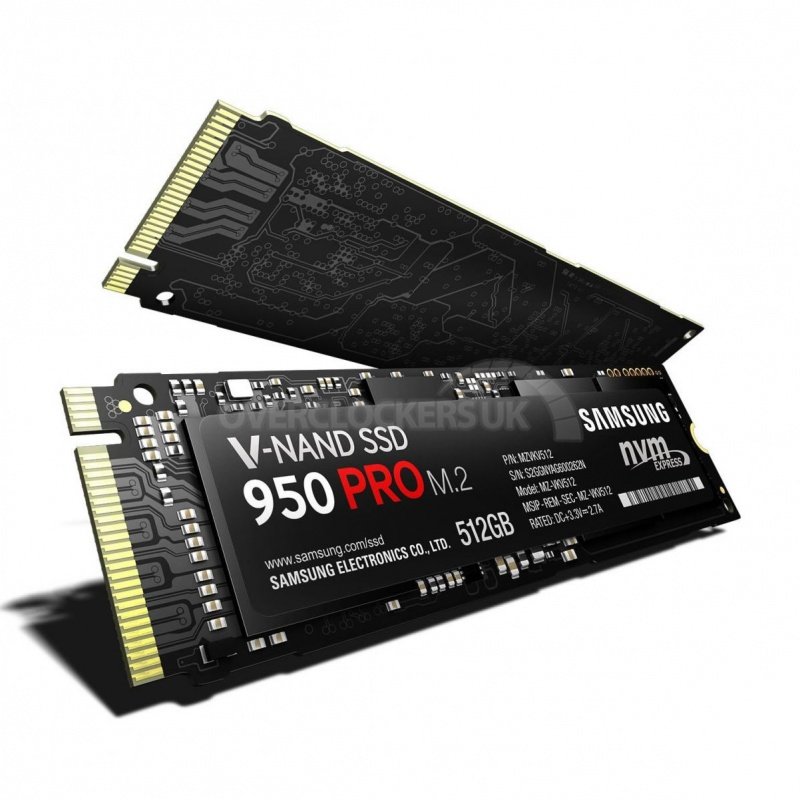
Where I messed up is the slightly small 275GB game drive SSD. Large games with huge textures benefit immensely from an SSD, and having a SSD to shove those games that should be on an SSD is a very worthy investment. It would be ideal for me to have a 1TB SSD for them and have them all in one place, this makes Windows reinstalls a lot easier as all the games are on one drive and need minimal setup. Alas, that’s out of my budget for now and the 275GB drive is simply a stop gap arrangement. Based on the games that you play and their size, get a separate SSD for them as and when you can afford to, it makes maintaining them far easier, especially when you are in that situation wherein a fresh Windows installation must be done. Use a large HDD for mass storage of documents and older games.
As for NVMe? I recently had a chat with a game developer who worked on Far Cry Primal and For Honor back when he was a Game Dev for Ubisoft and he’s currently running a Threadripper 1950X and two EVGA FTW3 1080 Tis in SLI on his private development rig which has no NVMe drives. He said the 0.5 second savings in load times is not worth it to him. Here’s a dude with no shortage of reasons and money for a fast rig of that stature, and he didn’t need a NVMe drive. I doubt most of us do either. Save the dough, unless you need the space savings or are getting one for very near the price of a regular SSD, just get the regular SSD. Spend the money on a better GPU and PSU, or go buy a gym membership and a box of whey protein and stop obsessively spending all this time here!
Considerations in choosing RAM:
16GB is regarded as a good amount today, more than adequate for today’s stuff and enough legroom for tomorrows awesomeness. If you cannot currently afford that much, get 8GB. Most processors run dual channel memory, and so for budget builds many will advise a 4GB x 2 configuration. I advise against this. Why? Maybe you can’t get 16GB now, but it will be essential soon and maybe you can add a second 8GB stick 6 months later. Keep it as future proof as possible, why get around to buying another 2 4GB sticks later and struggle if you encounter issues with this setup? You’ll encounter no initial issues with the single channel setup, and in the future when you get a dual channel setup, you won’t encounter any issues then either.
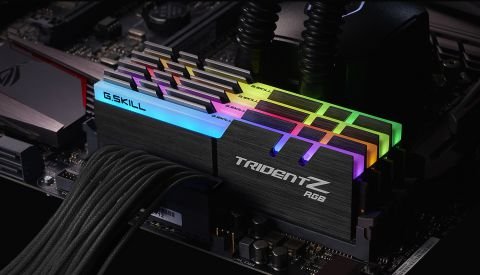
Do check compatibility well. Ryzen is known to really favor Samsung B-die, this has been confirmed by AMD themselves. Other chips may have similar preferences. Google memory support on your platform of choice before pulling the trigger to be sure. I got lucky and my LPX runs on XMP with no issues and even passed a night of MemTest. But don’t rely on chance and so please do a little research on this, you’ll save yourself of a colossal headache diagnosing issues that stem from memory that creates all sorts of instabilities and prevents a boot in the worst case.
As for RAM speeds, please don’t think spending an extra $100 on 3600MHz memory over 3000MHz memory will do you any wonders. Yes, you may score higher at benchmarks, but in any practical application, may actually see as little as a 2%-3% difference, that too when you’re lucky!
Considerations in choosing a case:
Go with what you need. Talk to yourself about what exactly are your requirements. I choose the S340 Elite because it’s the best looking compact ATX case, and there’s a fair chance I travel around and I would hate to have to check-in this rig on flights. With a case as compact as this, I can just take it as carry-on baggage. I spent a ton of time sitting on manufactures websites with a scale in my hand pouring over the dimensions of these cases as mentioned on their specification sheets. See what your requirements are and invest accordingly. Again, it would suck to have to buy a new case at a later date and to reassemble.
Maybe you hope to move onto Threadripper or X299 in the future. Then you’ll may need a case that can support the Extended ATX (E-ATX) size some of the boards of those platforms require. Assess your requirements thoroughly and invest once and invest well.
Considerations in choosing a graphics card:
Yes, finally. I know many of you were waiting on this one. So, there’s three ways I’d recommend to go about this: firstly, simple: get the fastest card you can currently afford. But what if it’s not that great a card/you desire more? What if you can “only” get a GTX 1080 now but you know a couple months later can get a 1080 Ti? That gets us to my second approach: if you need a working computer right away, get the cheapest card you can find. Maybe a reliable secondhand HD 7850 for $50. Maybe a GTX 1050 for $65 or a RX 550 or whatever. And hold it for a few months before getting a top of the line card.
But what if you don’t need a 1080Ti now, are sure you will not need it in the near future either and can get a 1060 or RX 570 or something and are completely okay with that? Maybe you are certain of sticking to 1080p@60Hz or similar. Then just get the best you can get, and be happy. Just make sure you’re really certain. It’s easy to convince yourself that you are content with your parts at the time you’re paying for them, but it is far easier to start craving for more once the gaming begins. Don’t let that be you. Be sure of your requirements, if you’re keen on jumping onto 144Hz or 1440p or even 1440p 144Hz or 4k but can’t afford a 1080 or 1080Ti now, maybe you can plan to spend on that a couple months down the line. It’s better to sacrifice today and get a small, cute little 1050 only to make a really nice jump a short bit later.
This is also what I did. I bought a reference 4GB RX480 back in March, before the mining craze. Got it brand new from Newegg with Doom free and a $30 rebate for a final price of $160. Man, those were good times for GPUs…seems a long time back now. I sold that RX 480 slightly after the mining craze and moved on to this GTX 1080 Ti. Why didn’t I sell earlier? I was convinced on RX Vega and so blinded by it, I didn’t even consider this move. So, there is my final and most important point WRT GPU purchases: never, ever make plans on the basis of future releases. Even if the product is good, you may not get your hands on it at MSRP for months. If you can wait that out with your current build, then by all means do so. Otherwise, just get the best deal out there on the move you plan to make and get on with your life.
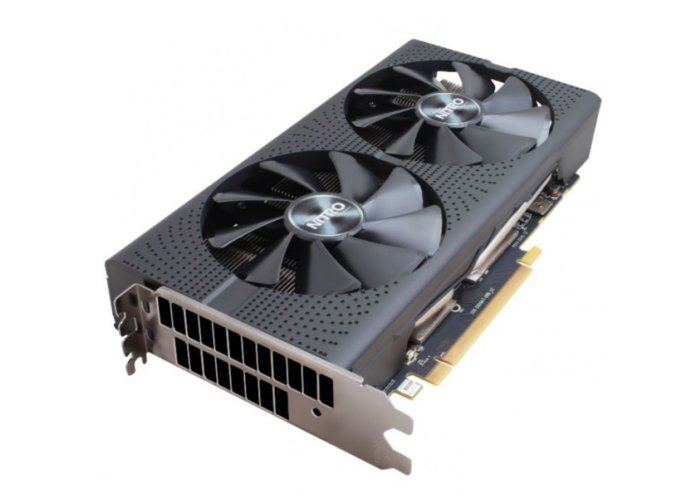
When choosing between various high-end parts, just get the best priced one. I picked the AORUS 1080 Ti because it was the cheapest of all custom 1080 Tis at the time, I also knew it’s copper baseplate cooling was superior to many others, but I didn’t really bother verifying this. Price ruled. What difference are you expecting between an AORUS 1080Ti, and a MSI Gaming X or an ASUS Strix? They’re aftermarket cards from good brands and are definitely better than the Founders Edition, that’s really all that matters. If the Strix was cheaper, I’d have got that even though I liked the AORUS card’s look more. Doesn’t matter. These cards are also incredibly fast and overclocking them really won’t be worth your time and thought. Just stick with a good brand with good after sales support and get the cheapest amongst them without worry. Really think 20MHz or even 50MHz on a 1080 Ti will matter? Nvidia boost automatically takes my card up to 1984MHz, though Gigabyte claims just 1600MHz something on their website. All other cards will be the same, ditto for other chips. As long as you’re getting one with a good AIB custom cooler, just get the best priced model and move on.
Considerations when choosing a monitor:
Now this is a touchy topic. You may be confused with all the terminology out there, I was too. First thing first, for a gaming setup, I absolutely recommend a Freesync or a G-Sync panel depending on your graphics card being an AMD or a Nvidia card. Either ways, I absolutely recommend active refresh, and not for the screen tearing which didn’t personally bother me as much, though again you may be different, but instead for the removal of stutter from those times your framerate falls below the refresh rate of the monitor and for extending the life of your rig by providing a smooth gaming experience for a longer time. Let me share my own experience:
I initially had a RX 480 in my system with a 1080p 60Hz monitor. With a good mix of high and very-high settings coupled with anti-aliasing, it rarely ever kept to a smooth 60 FPS. I hated the stutter, and soon switched to my current ultrawide 75Hz monitor. Aware of the increase in resolution, I was certain I’d have to slash settings down even further on my system, but thanks to Freesync, I never ended up having to care. I did not reduce my quality settings in a single game, GTA V or Witcher 3 or Elite Dangerous as framerates down to low 50s felt butter smooth. Following the Vega fiasco, I ended up with a 1080 Ti. Now this card is amazing, no doubt at all. Where the RX 480 could not even run GTA V at a smooth 60 FPS with no MSAA and high settings, I get a smooth 75FPS with 4xMSAA and every setting maxed other than grass and the advanced stuff. I get the 140FPS I should in the GTA V benchmark, and 95FPS on the Ghost Recon benchmark with Very High settings. But let me tell you something, there are still times when the framerate drops. Not very frequently, but not so infrequently that I can just dismiss it. Sometimes, you’ll end up in that fucked up scenario in GTA V where you’re downtown and it is nighttime and there’s tons of reflection and shadow and a lot of cars and people and it rains and there’s fog and my framerate actually tanks to 50-55 FPS. In Ghost Recon, keeping Turf Effects on along with ultra shadows and vegetation leads to a smooth 60 FPS, and yet a good number of times it will drop to 45-50. The stutter sucks. I hate it. Enough to have scouted out a G-Sync ultrawide somehow. Look, the benchmarks you see in card reviews are great, and I too get those figures and the 100 FPS on Witcher 3 at ultra with 4x Hairworks and the 28000 points on Fire Strike, but real-life gaming is not represented well by these benchmarks. There will be moments that bring even really powerful systems down, and the bigger problem: not all games are optimized well. Case in point, Far Cry 4 hates Ryzen in my experience, and Firewatch and Euro Truck Sim 2 aren’t the best optimized games either. No matter how fast your processor with how many cores and how expensive your GPU, not every game will run at those incredible framerates, at least not all the time, and not even the ones that benchmark really well. Active refresh technologies like G-Sync and Freesync are a very essential part of a gaming rig in my humble opinion.
Now you may have heard of LFC, or Low Framerate Compensation on monitors. Yes, this is another worthy feature. What does it do? Briefly put, if there are times your framerate falls really low, below the minimum boundary of the Freesync or G-Sync range, it’ll automatically display each frame twice so as effectively double the framerate and thus push it back into the Free/G sync range. So 20 FPS moments turn to 40 FPS. Again, a great feature to have. While only some Freesync panels have this, all G-Sync panels do. Keep in mind the new Freesync 2 certification from AMD requires all Freesync 2 panels to have this feature. G-Sync panels also have a feature called Ultra Low Motion Blur, or ULMB, which aims to combat the excessive blurring you may encounter when the framerates and refresh rates are so high that the monitors response time slows down to several milliseconds. Again briefly put, it aims to strobe the backlight in sync with the refresh rate, but here’s the caveat: G-Sync must be off for it to take effect, and its generally effective at the 85+ FPS range. As G-Sync is often a better feature to have enabled, don’t overpay for a monitor that claims to have a superior implementation of ULMB.
Now, for the very touchy topic of pixel density, or more so, the lack of it. Many will claim they absolutely need ‘x’ dpi, but really most of us will not notice. I’ve gamed on PS4’s hooked to 1080p 50” displays that looked fantastic, and using a 2560x1080 34” ultrawide has been a gorgeous experience. Yes, the extra screen space obtained for productivity from a 3440x1440 panel may be nicer, but you know what’s better? Not having extra space in my wallet due the $400-$600 extra I didn’t spend on the low refresh rate 1440p ultrawide panel. I was almost sold on them, and was reading reviews for the Acer X34, when on the conclusion page despite awarding it the “Editor Recommended” batch, Tom’s hardware felt compelled to mention how you shouldn’t dismiss the Z35 just for its lower resolution as its brilliant panel makes this a non-issue. Heading over to the conclusion page for the Z35 review, they call it “the most beautiful display that has graced our labs”. Now I doubt Acer would pay to show the Z35 over the X34, so I believe they’re being honest, and if they can feel that after testing all those displays, you should reconsider your worry on “pixel density”. Nonetheless, I did manage to check them both out in person and was really glad Tom’s said that as they were absolutely right: I found no reason to pay that much extra from the X34 1440p display. I program, work and game on a 2560x1080 display, and am only thrilled each time. Don’t believe people on the internet who profess their necessity for high pixel densities and thank God for having spent on it: it’s the internet, there’s a very good chance they’re either just trying to get themselves to feel better for having spent that extra amount or are image/video professionals who for some reason feel the need to state why they need it when it’s obvious to us all that they do. Some will be nice and honest too. 34 inches is not “too much” for 2560x1080, but those many extra hundreds of dollars might be too much for you. Don’t let this deprive you of the experience an ultrawide monitor can get you, and do think twice and try to check them out in person always.
Also, an added bonus, many 2560x1080 panels including the Z35 have a very high refresh rate along the lines of 165-200 Hz. So, the 1080 Ti might be rendering to a slightly lower resolution screen but really gets to stretch its legs with that refresh range on a G-Sync panel. Also, the 1080 Ti in my system just got more future proof thanks to this. See why I say don’t dismiss things easy?!
Lastly, would I recommend an ultrawide display? Absolutely. Again, a game changing and exhilarating experience not only the first time you play, but each time. And full screen modern movies. What’s not to love?
All this finally leads us to our conclusions:
Conclusions:
- Buy the fasted factory-clocked chip you can, overclock only when necessary, or if you have the time and patience to learn to do it right. You can also spend on a CPU in stages, say if you’re building a system today on a limited budget and hope to upgrade in the future, get a good motherboard and PSU and a Ryzen 1400 or 1500X. That’s adequate for now, and then around 18 months later when 2nd gen Ryzen is out, get the top notch 6 or 8 core model then. With intel, your choices in this regard may be limited as they always have so many motherboard sockets. Maybe you can get an i3/i5 now and get an i7 from the same generation later on from the secondhand market.
- With motherboards, more expensive is hardly ever necessary. Look for a solid board in the $90-$130 range, it’ll probably have more than enough I/O, connectivity and PCI-E lanes for you. Then again, if going the X299 or X399 route, go all out and get the beefiest, fanciest board you can: you’re not upgrading for ages and no point getting onto the HEDT bandwagon and compromising even a single feature thanks to the board. And surely, going this route, you can afford it!
- Check RAM compatibility on your platform. For a gaming system, if not going with 16GB today, get a single 8GB stick and upgrade by adding another one later so as to get them on dual channel mode. Don’t think you’re going to get a world of difference by splurging on 3600MHz memory over 2600MHz one. The real-world performance difference is negligible, if you’re lucky, you may see a couple extra frames. Also do keep in mind that with Ryzen, any RAM speed above 3200MHz depends on silicon lottery as RAM speeds directly correlate to the speed of the Infinity Fabric in the chip. You may splurge to get the highest speed RAM kit but may have no luck running it!
- Splurge on a solid PSU. If you’re definitely not upgrading, just get what you need for your current build and be done with it. Otherwise, get as much breathing space as possible. If you may go with SLI/Crossfire in the future and may have watercooling pumps and radiators and several drives, get at least a 1200W PSU.
- A 250GB SSD for the OS and applications should be more than adequate. Try to get a separate SSD for the games, it is definitely worth it for the newer, larger titles, and be sure to add a mass storage hard drive.
- Get a case that suits your needs. If you’ll be travelling, get a compact one. If you’ll be upgrading to an E-ATX based platform like Threadripper or X299, get a case that’ll accommodate them when it’s time.
- Don’t get talked into the pixel density argument WRT monitors. Try them out yourself, but don’t over splurge beyond your means. Definitely try your best to score Free/G sync, and do consider ultrawide displays. A 29-inch ultrawide is as tall as a 24” 16:9 monitor and a 34” one is as tall as a 27” 16:9 display. Keep that in mind when choosing, and try to get a large one, especially if you’re paying extra for G-Sync, as you may not upgrade soon.
- Don’t obsess with running your CPU as cool as possible, it’s unnecessary as long as it’s running well within thermal range and keep in mind that all that excess CPU cooling will just dump more heat into the surrounding, thus creating a warmer atmosphere for you around your PC for no added benefit to the chip. Think also of the higher risk of pump failure and liquid leakage and the RMA hassles before you invest in watercooling. With custom cooling loops, think of the fuss each time you need to move anything inside, what with draining the reservoir and everything, do your research beforehand and be sure you’re ready for all this.
- Lastly, along with Googling your doubts and asking them here and on other forums, spend time on the manufactures websites. They often have great comparison tools and detailed specs. Make use of that and of your own reasoning, don’t blinded accept anything you’re told without researching this way yourself, and putting your own thought into it.
Some general things to keep in mind when building:
- If your PSU has those daisy-chain 8 pin connectors for the GPU in a (6+2) + (6+2) config, for high powered cards that have two 8-pin power slots, use two different cables instead of daisy chaining. Remember the following:
6 pin = 75 watts
6+2 = 8 pin = 150 watts
So using:
8 pin is okay
6+2 is okay
6+6 to a single 8 pin is okay
But,
8+8 in one cable via daisy chaining is not
6+2 + 6+2 in one cable via daisy chaining is not and
6+2 + 6 via daisy chaining is not
- Be sure to plug in RAM in the right slots. In my motherboard, the RAM acted very funny and never enabled XMP when I’d accidently left them in the black slots numbered 2 and 4. I moved them to the red slots numbered 1 and 3 and all has been good since. Your board may have such a need too. Check the manual.
- Run MemTest once overnight on newly installed RAM with XMP enabled.
- Don’t forget to enable XMP in the BIOS! This has to be done manually!
- Update the BIOS only when needed, when there is a feature that’s missing in your current BIOS or a bug that’s affecting you and you need it fixed, do not unnecessarily upgrade if all is well. Follow the old American adage: If it ain’t broke, don’t fix it!
- Enabling a global frame rate limit in Radeon Settings or the Nvidia Control Panel when you’re running Free/G sync may prevent some games from running in full screen mode. I had this problem when I had used Radeon settings and set the Global Frame Rate Target Control setting to 74 FPS, it made the display hang when trying full screen with Elite Dangerous and Far Cry 4. Disabling this setting fixed it, this was an accidental discovery I made that had me scratching my head for a long time wondering what’s wrong and I do hope this helps out someone in a similar situation.
- Lastly, when enabling a frame rate limit such as above, set it to one below the max refresh rate of the monitor, so 143 FPS for a 144Hz panel.
And with that we’re done with this humongous post, congratulations and thank you for having gone through it! I hope this helped you in some way, and do feel free to reach out with any questions/suggestions you may have. Wish you the very best ahead!
LINUX:
Do NOT get ANY Gigabyte AM4 motherboard if you're planning on using anything Linux. Kernels newer than 4.10 will encounter a panic on boot, displaying "unexpected IRQ trap at vector 07". This'll need you to boot with ACPI off. Fedora 24 and Linux Mint 18 are stable though.
Virtual Reality
Three unused USB 3.0 ports and one unused 2.0 port are recommended.
1x 3.0 USB port for the headset
1x 3.0 USB port for the 3D Positional Tracker
1x 3.0 USB port for Oculus Touch (available at a later date)
1x 2.0 USB port for Xbox wireless controller
there are a variety of different USB controllers, and not all of them are fully compatible with the Rift. Make sure to check before you buy a motherboard
Thanks for reading and happy building! If you dug this follow and check me out on (twitter)[https://twitter.com/j_millerworks] and (patreon)[https://www.patreon.com/Jmillerworks]!
